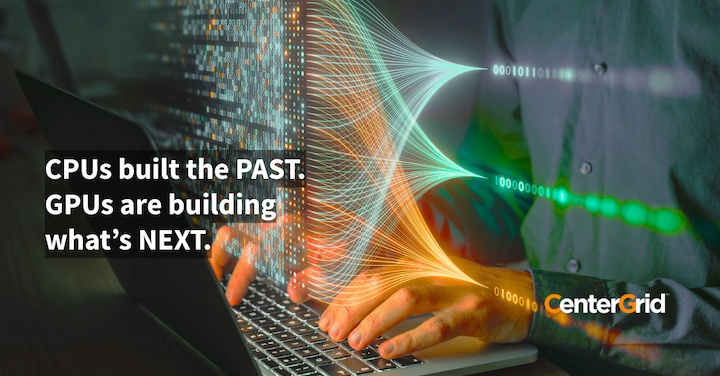The rise of GPU computing represents one of the most significant technological shifts in recent years.
While GPUs were originally designed for rendering graphics in video games, they’ve evolved into powerful tools that are transforming how businesses operate across virtually every sector.
Let’s explore why GPUs are becoming indispensable and what this means for different industries.
Key Industries Embracing GPU Technology
Media and Entertainment
The entertainment industry’s demand for GPU computing extends far beyond traditional gaming. Video streaming services require GPU-accelerated encoding to deliver high-quality content to millions of viewers simultaneously. Visual effects studios need massive GPU clusters to render increasingly complex CGI sequences. As virtual and augmented reality become more mainstream, the demand for GPU processing will only increase.
Healthcare and Biotechnology
Medical imaging analysis, drug discovery, and genomic sequencing all require massive parallel processing power. GPUs excel at these tasks because they can simultaneously process multiple data streams, significantly reducing the time needed for critical analyses. For instance, what once took weeks of processing medical imaging data can now be completed in hours, enabling faster diagnoses and treatment planning.
Pharmaceutical companies are leveraging GPU computing to simulate molecular interactions and predict drug efficacy, dramatically accelerating the drug development pipeline. This capability has become especially crucial as we face new health challenges and the need for rapid therapeutic responses.
Financial Services
The financial sector’s appetite for computational power continues to grow exponentially. High-frequency trading, risk analysis, and fraud detection systems demand real-time processing of enormous datasets. GPUs provide the computational backbone needed for these operations, enabling financial institutions to process millions of transactions per second while simultaneously running complex risk models.
Beyond trading, banks and insurance companies are increasingly using GPU-powered AI systems for customer service automation, credit scoring, and market analysis. These applications require processing massive amounts of unstructured data, including text, voice, and behavioral patterns – tasks where GPUs excel.
Manufacturing and Industry 4.0
Smart manufacturing facilities are becoming increasingly dependent on real-time analytics and machine learning. GPUs power the computer vision systems that inspect products for quality control, predict equipment maintenance needs, and optimize production workflows. The ability to process sensor data from thousands of IoT devices in real-time is crucial for maintaining efficient operations and preventing costly downtime.
Automotive and aerospace manufacturers are particularly reliant on GPUs for designing and testing new products. Complex simulations that once required physical prototypes can now be conducted virtually, saving both time and resources while improving safety and innovation.
Scientific Research and Climate Modelling
Climate scientists rely on GPU-accelerated computing to process complex atmospheric models and predict weather patterns. These simulations require processing petabytes of data and running millions of calculations simultaneously – tasks that are perfectly suited for GPU architecture. Similar computational demands exist in fields like particle physics, astronomy, and oceanography.
Core Benefits of GPU Computing
Speed and Efficiency: GPUs can process certain types of calculations hundreds of times faster than traditional CPUs, dramatically reducing time-to-insight for complex analyses.
Cost-Effectiveness: While GPU infrastructure requires initial investment, the performance gains often result in lower total operating costs and better resource utilization.
Energy Efficiency: Modern GPUs can perform more calculations per watt of power consumed compared to traditional CPU-only solutions, making them more environmentally friendly for compute-intensive tasks.
Scalability: GPU computing solutions can be easily scaled up or down based on demand, whether through on-premises infrastructure or cloud services.
Strategic Implementation Steps
Assessment Phase
Organizations should evaluate their computational requirements for the next 3-5 years, considering both current operations and planned initiatives.
Strategic Planning
Companies need to create a comprehensive plan for GPU integration, including infrastructure requirements, training needs, and potential partnerships with technology providers.
Infrastructure Decisions
Many organizations benefit from a combination of on-premises GPU infrastructure and cloud-based GPU services, allowing for flexibility and cost optimization.
Workforce Development
Building internal expertise in GPU computing and related technologies is crucial for successful implementation and ongoing operations.
Technology Monitoring
The GPU landscape is evolving rapidly, with new hardware and software solutions emerging regularly. Organizations need to stay informed about these developments to maintain competitive advantage.
The Bottom Line: GPUs Are the New CPU
Looking ahead, GPU computing will become as fundamental to business operations as CPU computing is today. The technology’s ability to handle massive parallel processing tasks makes it indispensable for organizations dealing with big data, AI, and complex simulations. Companies that fail to embrace GPU computing risk falling behind competitors who can process data faster, develop products more quickly, and deliver better customer experiences.
The transition to GPU-powered computing environments isn’t just about staying competitive – it’s about being prepared for a future where real-time processing of complex data is the norm. Organizations that start planning and implementing GPU strategies now will be better positioned to take advantage of emerging opportunities and handle future challenges in their respective industries.
Don’t Let Your Infrastructure Hold You Back
At CenterGrid, we help organizations plan, build, and scale GPU-powered cloud and hybrid environments.
Ready to modernize?

